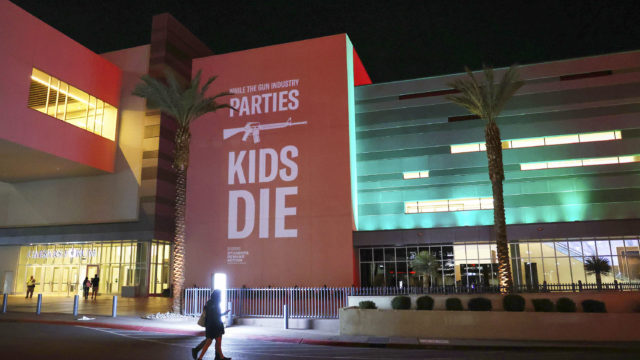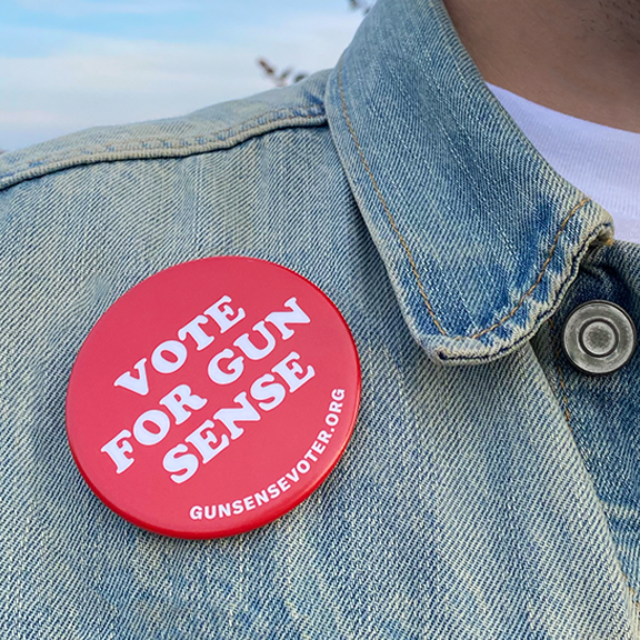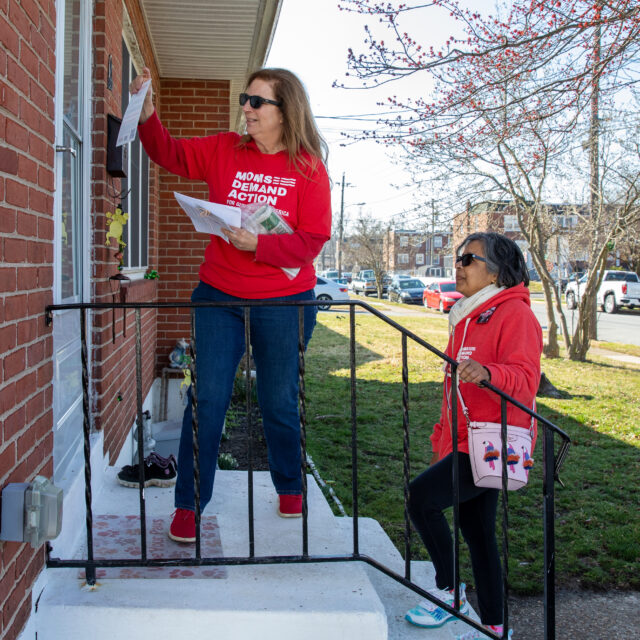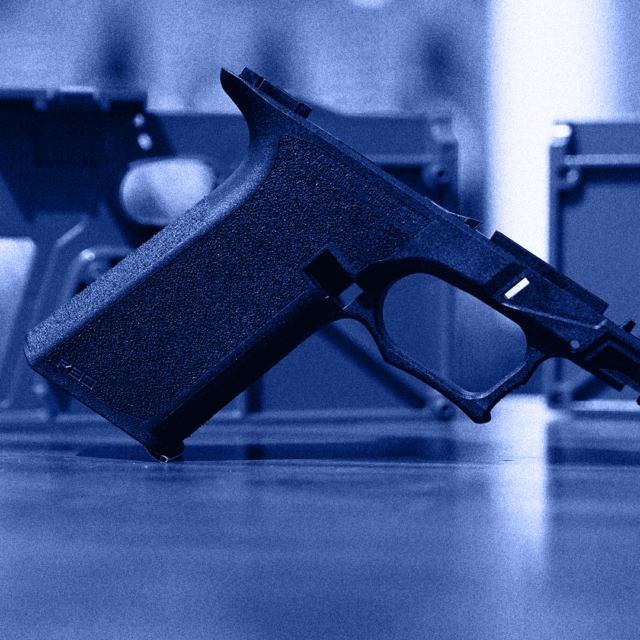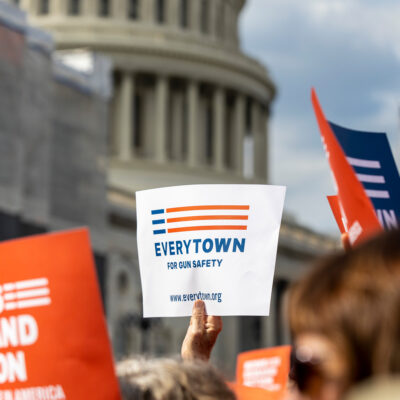Every year, the gun industry rakes in approximately $9 billion while gun violence kills more than 40,000 people in America and wounds twice as many. At a moment when gun violence has become the leading cause of death for children and teens in America. The cost of human life is incalculable, but estimates put the economic cost of gun violence at roughly $557 billion each year.
Everyone has a role to play in keeping our communities safe, especially the people who make weapons. Gun manufacturers know how deadly their products are, yet they choose to continue to put their profits ahead of saving lives. Over the last two decades, their profits have soared. Simultaneously, so have rates of gun violence.
Yet gun manufacturers refuse to innovate toward safety and continue to avoid the same accountability that has led so many other industries, like the automotive, tobacco, and pharmaceutical industries, to safer practices. Instead, they continue to manufacture increasingly deadly products, including military-style, high-capacity weapons and those designed for concealment. Worst yet, gun makers and sellers haven’t had to answer for their products in decades. But why?
The answer is the Protection of Lawful Commerce in Arms Act (PLCAA), which gives the gun industry immunity from most legal accountability and is one of the biggest giveaways to private industry in American history.
In fact, not a single gun manufacturer accused of negligence has gone to trial since its passage in 2005.
At the behest of the NRA, Congress also passed the Tiahrt Amendment, which limits how data about guns used in crimes can be shared, keeping the industry out of the conversation of how criminals obtain firearms.
Making guns shouldn’t give you a get-out-of-jail-free card for dangerous business practices.
1. Reckless Marketing
We can’t allow gun manufacturers to market assault weapons to teens, rile them up with militaristic imagery, and then play innocent when those teens carry out massacres.
Just as the Federal Trade Commission helped put an end to Joe Camel and the tobacco industry’s attempts to hook young smokers, we need to hold gun manufacturers accountable for marketing military-style weapons to civilians and, in particular, young men and children.
Gun manufacturers market their wares in increasingly brazen ways, often touting the deadliness of their products, glorifying combat, and attempting to appeal to younger audiences by targeting teens with references to Star Wars and Call of Duty or by putting AR-15s in the hands of children.
Some gun manufacturers have stooped so low as to create marketing that relies on associating their products with the U.S. military in advertising imagery, creating a so-called “halo effect”, hoping to enhance the credibility of their firearms in the eyes of civilian consumers—even if they don’t have military contracts.
2. Innovating to Cause More Harm
During a House Oversight Committee hearing in July 2022, one gun company CEO claimed that firearms have not substantially changed in the last 100 years. But we know that simply isn’t true.
The latest industry innovations have only made today’s weapons more dangerous than ever before. Gun makers have pushed the envelope to circumvent regulation, make their products harder to detect, or simply increase their revenue.
Instead of designing firearms that can’t be fired unintentionally or if they fall into the wrong hands, or making it easy for law enforcement to trace crime guns, companies have created binary triggers and bump stocks that allow civilians to mimic fully automatic fire.
They have created impossible-to-trace ghost guns that help circumvent background checks, and they have designed AR-15s that can be modified in minutes to bypass regulations in states that have banned assault weapons.
They have normalized the AR-15 platform and similar designs, increasing their simplicity and modularity and making it easier for gun owners to customize their rifles and pistols or build them from scratch, creating a huge, profitable aftermarket for parts and accessories.
Gun industry executives also claim that their customers don’t want firearms to have more comprehensive safety features. Yet they could choose to implement and standardize lifesaving, common-sense safety mechanisms, including traditional safeties that help prevent unintentional discharges, and develop smart guns that can only be operated by authorized users, like today’s smartphones. But the industry refuses to evolve, and our communities continue to pay the price.
3. Ignoring Red Flags While Raking in Profit
The industry has done almost nothing to take steps to prevent the flood of guns into the criminal market and to gun traffickers. Between 2017 and 2021, over 1.4 million of the industry’s firearms were recovered by law enforcement in connection to crimes.
An increasing percentage of the guns recovered at crime scenes were recently purchased within the last three years, which is a telltale sign of illegal intent or activity at the point of sale, like a straw purchase.
One dealer in Georgia, for example, sold more than 6,000 guns over five years that were later recovered at crime scenes—equivalent to roughly 10% of the guns sold by that dealer. That dealer is still in business, and major manufacturers continue to supply it.
The industry also fails to keep track of its deadly inventory, fueling illicit markets. The Bureau of Alcohol, Tobacco, Firearms and Explosives (ATF) reports that from 2017 to 2021, over 74,000 guns were reported stolen or missing from licensed gun dealers. These aren’t missing handbags; they’re firearms.
The gun industry is regulated by the Bureau of Alcohol, Tobacco, and Firearms (ATF) and the Biden-Harris Administration has taken bold executive actions to rein in bad actors in the industry, establish new regulations, and shut down rogue gun dealers who willfully violate the law. Last July, our supporters sent over 900,000 messages and calls to support the confirmation of Steve Dettelbach to be the ATF Director—the first Director for the agency since 2015. ATF saw an unprecedented 14% increase in its budget for 2023, and we’ll continue to push the ATF to use its existing power and resources to take on the industry.
There are too many actors in the gun industry who are reckless, greedy, and unwilling to take even basic safety precautions to make sure their products aren’t used to perpetuate our gun violence epidemic. We will not let this dangerous behavior continue unchecked. We will continue to reveal the gun industry’s role in gun violence and investigate how the gun industry profits from death.
Everytown Law will continue to support survivors of gun violence and sue gun makers who operate recklessly and endanger the public—like we’ve done with cases in Kansas City, Highland Park, and Uvalde, and with ghost gun sellers.
We must start calling on law enforcement, local leaders, and news outlets to #NameTheGun whenever one is used in a crime to tie it directly to a manufacturer. For too long, that information has been unknown or concealed, but it’s important to know which guns are being used to commit crimes in our communities.
Our grassroots movement of Moms Demand Action, Students Demand Action, and gun violence survivors demands that the gun industry prioritize safety over sales. Gun makers can police their supply chains to stop guns from falling into the wrong hands. They can market their products responsibly and honestly—and not target children. They can stop innovating for the sake of profits, and increased lethality, and instead start making firearms safer.
Are you ready to join us to hold the gun industry accountable?
Gun manufacturers can help prevent gun violence and make our communities safer. Sign our petition to demand they do exactly that.
Add Your Name
